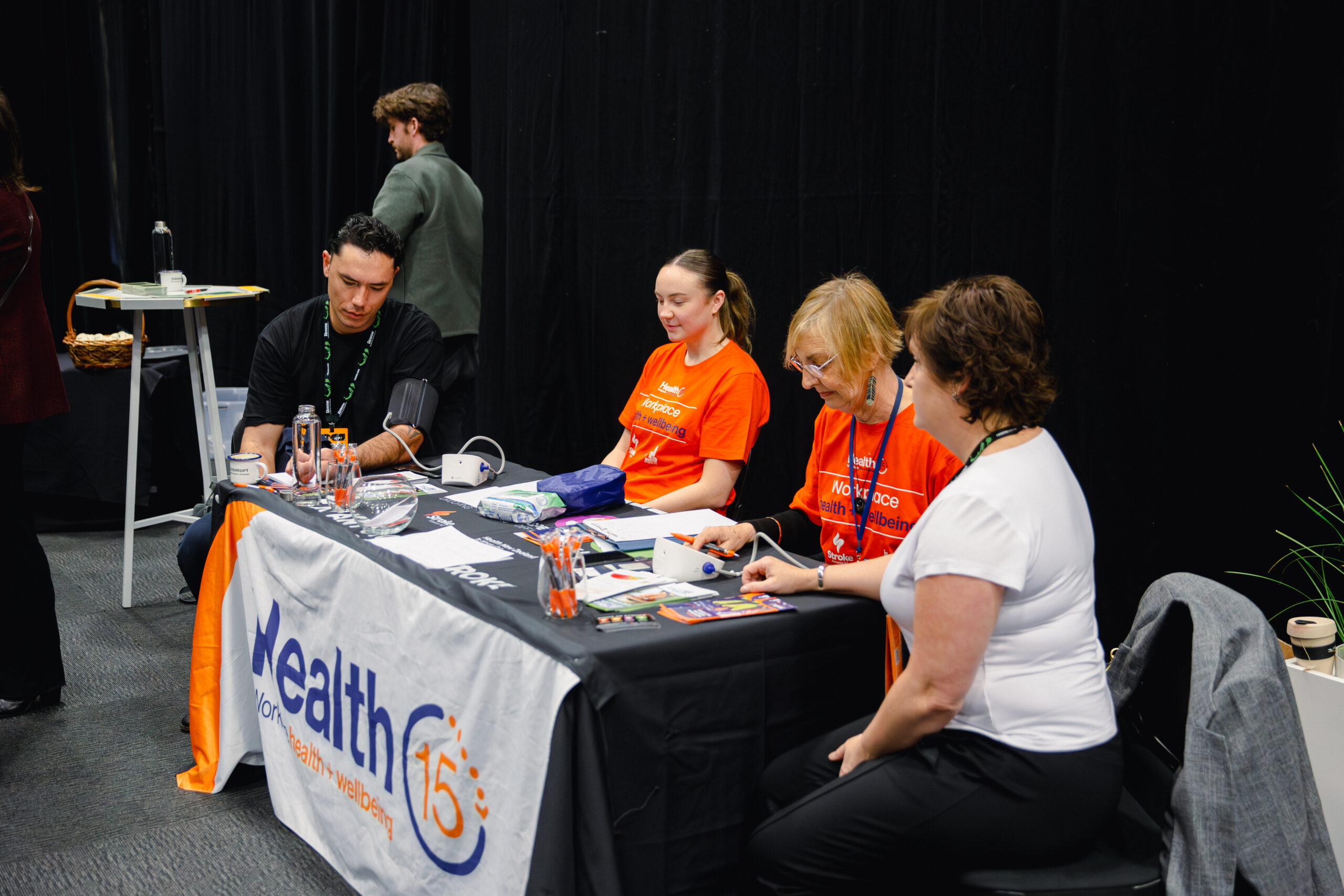The future of Aotearoa’s built environment relies very much on the health and wellbeing of its people. The results are in and there’s cause for concern writes Jamie Summers, Project Director – The Building Intelligence Group Ltd and Board Member – Stroke Aotearoa.
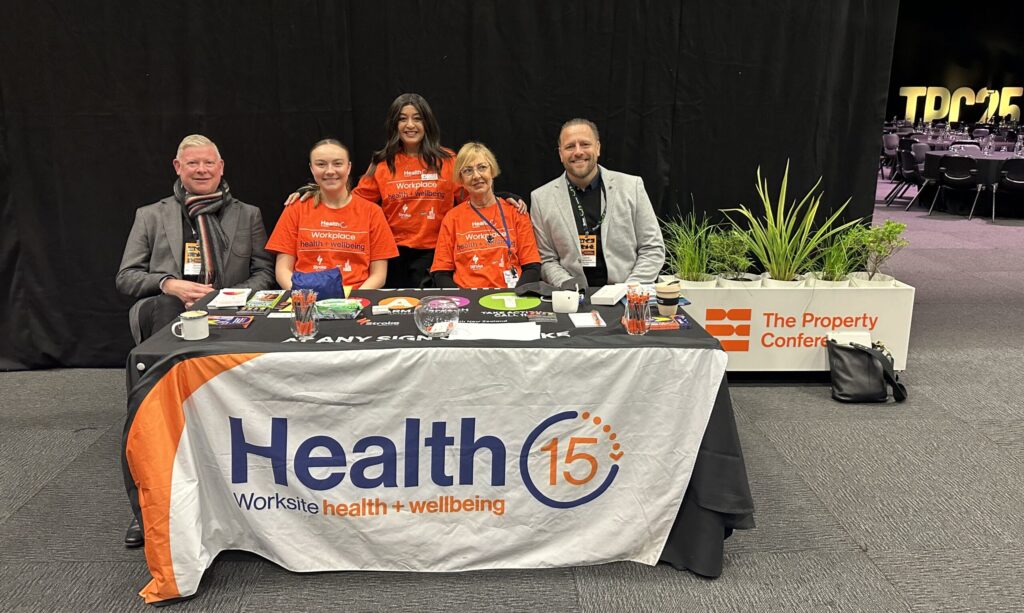
The Property Council New Zealand (PCNZ) conference in September brought together 452 delegates – a critical mass of the sector’s leaders, thinkers, and builders. Beyond the keynote speakers, the strategic networking, and the necessary stream of on-tap coffee, the event offered a fascinating snapshot of the people who shape Aotearoa’s built environment.
A demographic breakdown of attendees revealed that the majority were concentrated in the Owner/Developer/Property Manager/Investor (35%) and Consultant (32%) categories. The legal, banking, and insurance cohort accounted for a significant 19%, with construction a smaller 10%. While the sector is known for its intensity and high-stakes nature, the gender split of 32% female and 68% male and the professional roles of the attendees, provide a clear picture of the industry’s senior leadership and operational core.
But what happens when you take the pulse ‘literally’ of this cohort? Are we in good shape?
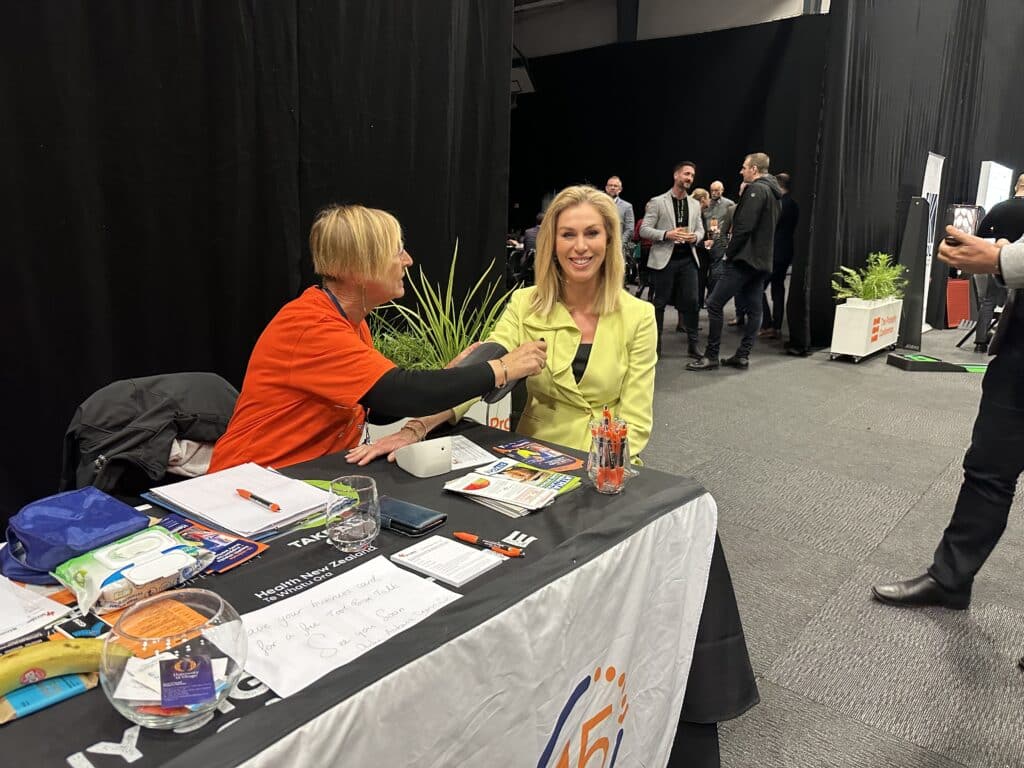
The Conference Health Check: Unpacking the Numbers
Our voluntary Blood Pressure (BP) and Atrial Fibrillation health checks conducted at the conference provided concrete and, frankly, concerning results. Of the 98 delegates tested (22% of attendees), the findings give serious pause for thought, particularly when compared to data gathered by Stroke Aotearoa over the last ten years in communities across the motu, and the typical findings for site-based construction workers.
The numbers are stark. Only eight of the 98 individuals tested had a “normal” blood pressure reading. The vast majority of professionals were sitting in the high-risk categories, with the risk escalating sharply with age:
- For the 36–49 age group, an alarming 41% registered in the High – Level 2 range, while only 7% were normal.
- For our most experienced professionals, the 50 and over cohort, the situation was critical, with 6% registering in Hypertensive Crisis and a further 22% in the High – Level 3 range.
- Even the younger group (35 and under) showed cause for concern, with 15% in the High – Level 3 category.
This collective stress is further compounded by a widespread lack of awareness: 60% of those tested said that either it’s been more than a year, or they couldn’t recall the last time they had their blood pressure checked, which is especially concerning when medical guidance is for anyone over the age of 40 to have their BP tested at least once a year. This suggests that the industry is operating under high pressure, and without systemic or built-in health oversight.
It’s tempting to jump to conclusions but, before booking a battery of medical appointments, we need to contextualise the findings. A high-energy conference is a perfect storm for elevated readings. The potent combination of networking pressure, socialising, and readily available stimulants are significant, which can be temporary contributing factors. However, these temporary spikes merely underscore the underlying reality we instinctively know: The industry is demanding, and the health of its professionals requires a sustainable strategy.
This also takes on a starker significance when contrasted with the visibly growing issue of homelessness noticeable across Auckland. For an industry dedicated to providing shelter and space, the dichotomy between the professional wellbeing of the builders and the lack of basic shelter for others in the city serves as a powerful reminder of the broader societal impact of the built environment.
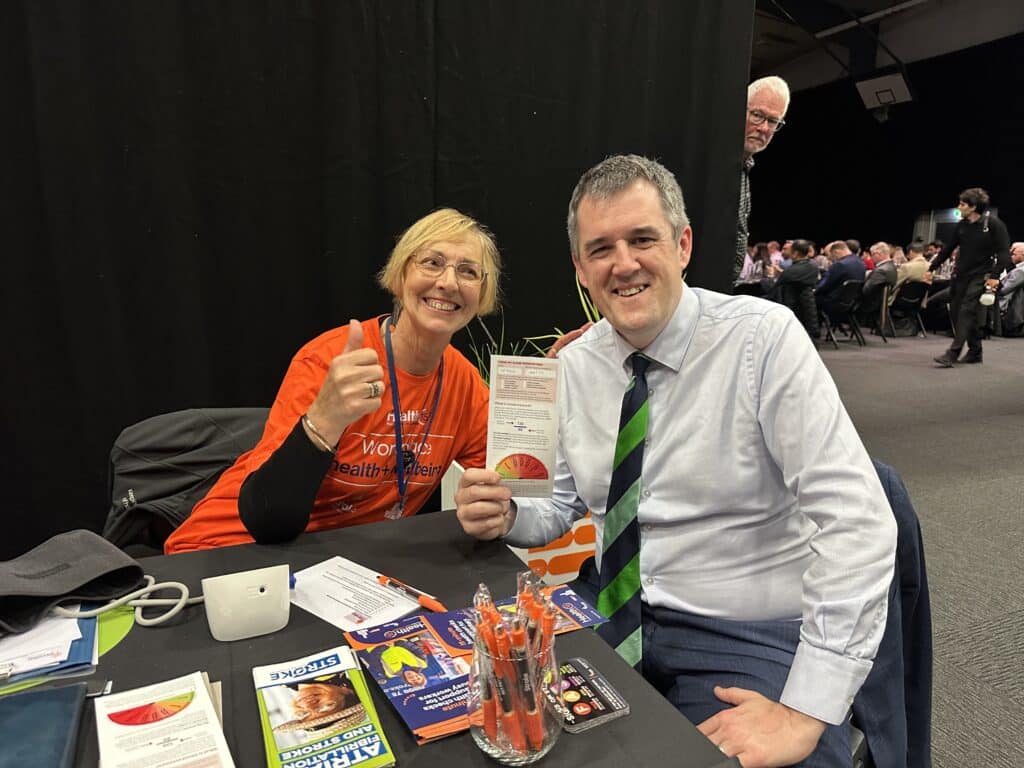
Andrew’s Story
Andrew was one of the conference attendees. As a business-owner of a busy renovation company in Dunedin, he typically has little time to spare. While his wife Andrea was able to depart early, Andrew’s week was exceptionally busy and he wasn’t able to get away until very short notice.
“I normally drive to Queenstown from Dunedin but, because we were so busy, I was absolutely exhausted. I actually bought a flight and flew to Christchurch and then flew from Christchurch down to Queenstown,” Andrew says.
Andrew decided to make the most of his time at conference and get his blood pressure checked.
He’s glad he did.
“I trucked over there and sat down and I read around about 172 over 105,” Andrew says.
“I got a very stern look from this young lady,” he recalls, “’You need to go and get something sorted out pretty quick,’ she said.” Andrea also suggested he “pull finger” which led to Andrew booking an appointment with his GP for Monday then and there!
With prescribed medication, the 59-year-old stepdad and grandad’s blood pressure readings are heading in the right direction. The couple have also committed to making some healthy lifestyle changes.
“I think the reality is, as you get older, you become more conscious, and I think you kind of blast through life without really thinking about these things. Our generation hasn’t really had that kind of teaching culture,” Andrew says, “I suppose when we left school, geez, we were taught you’re on your own basically. So to have 400 people in a very professional working environment and having that opportunity there was absolutely fantastic. The proof really was in the pudding.”
Andrew says, if he’d left going to his GP for another week or two weeks, his story could have been very different.
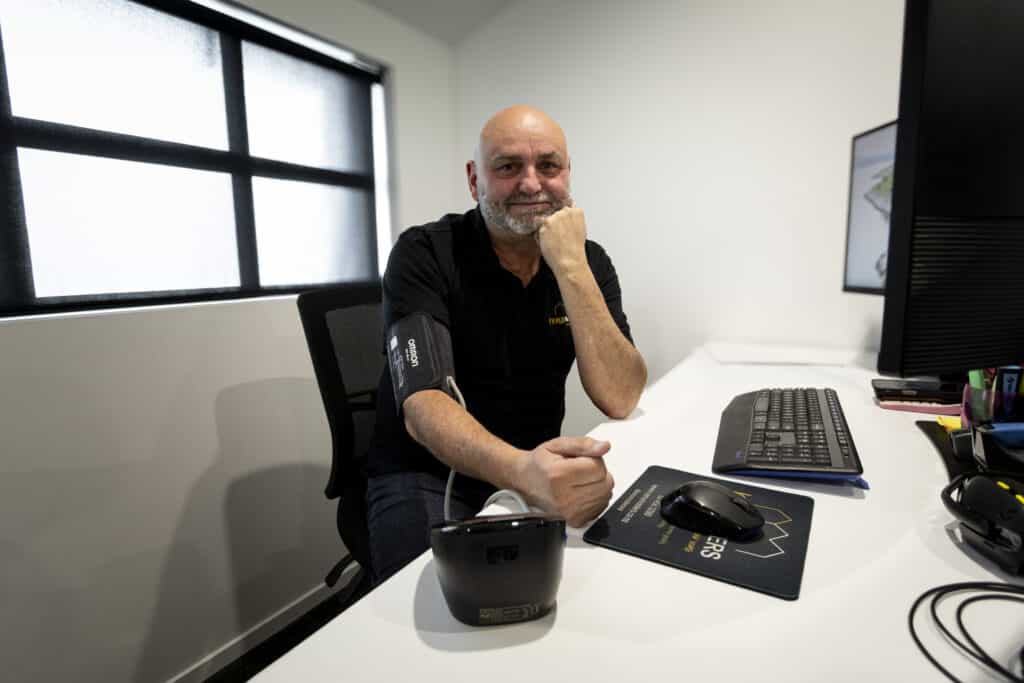
My Story: The Price of Pressure
I have worked in the construction and property sector for over 27 years and know first-hand the constant pressure of low budgets, tight deadlines, and demanding deliverables. It is a high- stress, high-pressure environment we are all conditioned to work within.
For me, this relentless pace tragically fell apart six years ago. At just 39 years of age, I suffered a stroke.
The data from the conference and the high percentages in critical categories, are not just abstract statistics; they are a mirror reflecting the hidden costs of our professional culture. We cannot continue to celebrate tough deadlines while ignoring the ticking clock in our own arteries. Our industry must shift from a ‘work harder’ ethos to a ‘work healthier’ one.

The Future of Health15: A Collective Approach to Wellness
So, how does the industry move forward? We do this by acknowledging the results, understanding their context, and committing to a culture where wellness is non-negotiable and integrated – for the people on the tools, the brokers, the developers, and the managers who make the decisions.
This is where the expanded work of Health15 comes into play. Our mission has always been clear: to be more than just a resource for stroke prevention. We are growing to provide a far more comprehensive health strategy for the entire sector.
To achieve this, Health15 now works alongside a number of key partners committed to reducing the impact of cancer, diabetes, arthritis, epilepsy and heart-related issues. Alongside Stroke Aotearoa, the initiative’s Kaitiaki (guardian) and the original driver, they bring a wider array of confidential health and wellness checks directly to construction sites across the country. While the host pays a fee for this onsite service, one simply cannot put a price on the lives who benefit from it. Those who might, otherwise, fall through the cracks.
Together, we can address a fuller spectrum of common and critical health issues facing the New Zealand workforce, providing on-site checks and vital education and information. The key to our success remains the commitment to providing a confidential and non-judgemental service, removing barriers that often prevent hard-working professionals from putting their health first.
Act Now: Bring the Check-Up to the Construction Site
The data from the PCNZ conference, reinforced by the stark reality of personal experience, is a clear warning sign. We cannot afford to wait for chronic conditions to manifest before we act. The health and wellness of our teams, whether they’re in the boardroom or on the building site, is the foundation of our industry’s productivity and long-term success.
To all delegates, PCNZ members, and leaders in the property sector: Take the critical first step in changing this narrative. Think of the wellbeing of the workers in your workplace and contact the Health15 team today.
Book a confidential health and wellness visit for your workplace and invest in the people who build Aotearoa. Email: enquiry@health15.nz or Freephone: 0800 STROKE (0800 78 76 53).
Author

Jamie Summers
Project Director – The Building Intelligence Group Ltd and Board Member – Stroke Aotearoa

